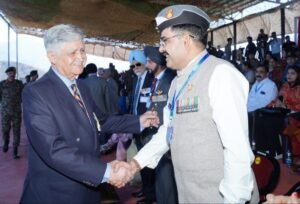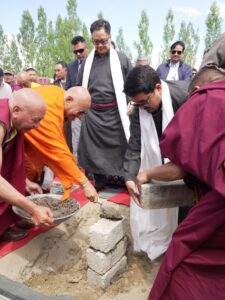Last Updated on October 1, 2021 at 5:22 pm
Indian Astronomical Observatory (IAO) at Hanle in Ladakh has made India a fast becoming prime location for astronomical studies. The main reason behind this is the advantage of having clear nights, less light pollution, background aerosol concentration, very dry atmospheric condition and no interruption of monsoon has made it a promising observatory sites.
A detailed study has been done by the team of researchers from India and other countries who studied the night time cloud cover fraction over eight high altitude observatories, including three in India. The data has been studied from these observatories extending over 41 years, along with 21 years of satellites observations.
The study published in the Monthly Notices for Royal Astronomical Society classifies the quality of observable nights for different astronomical usages like photometry and spectroscopy on a daily basis. The eight observatories included the Indian Astronomical Observatory (IAO) in Hanle and Merak (Ladakh), and Devasthal (Nainital) in India, Ali Observatory in the Tibet Autonomous Region in China, South African Large Telescope in South Africa, University of Tokyo Atacama Observatory and Paranal in Chile, and the National Astronomical Observatory in Mexico.
The research team found that the Hanle site is as dry as the Atacama Desert in Chile and much drier than Devasthal, has around 270 clear nights in a year.
The team found Paranal located in a high-altitude desert in Chile and offers 87 per cent clear nights in a year. IAO-Hanle, and Ali observatories, which are located around 80 km from each other, are similar to each other in terms of clear night skies. They found out that Devasthal has a slightly larger number of clear nights compared to the other sites in the sub-continent but are affected by monsoons for about three months in a year.
The research led by Dr Shantikumar Singh Ningombam of the Indian Institute of Astrophysics (IIA) found that the night observations at IAO-Hanle from the Himalayan Chandra Telescope (HCT) are possible throughout the year without any interruption due to monsoons.
The research led by Dr Shantikumar Singh Ningombam of the Indian Institute of Astrophysics (IIA) found that the night observations at IAO-Hanle from the Himalayan Chandra Telescope (HCT) are possible throughout the year without any interruption due to monsoons.
Study has made a way easier for government to setup more of such observatories and telescopes in the surrounding areas of the region making it a prime location for astronomical observations.



